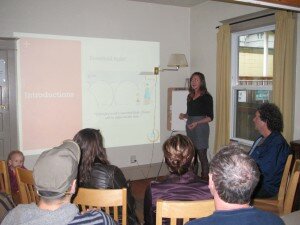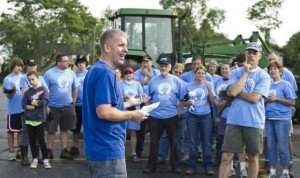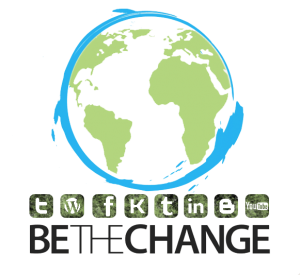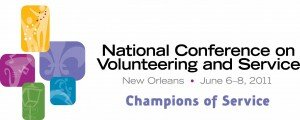 As a volunteer manager, it is important to keep your volunteers up-to-date and in the loop with important information regarding your organization. Communication is also a key step to project management and it should be an essential step in every service project planning steps. What is the best communication strategy for your organization?
As a volunteer manager, it is important to keep your volunteers up-to-date and in the loop with important information regarding your organization. Communication is also a key step to project management and it should be an essential step in every service project planning steps. What is the best communication strategy for your organization?
Check out our communication suggestions below and decide which one will work best for you!
-
Social media: Our culture is increasingly becoming more reliant on technology. This heavy reliance makes a social media strategy essential for any emerging business, including the nonprofit sector. If your organization can secure funds to make a social media team possible, it will be worth every penny! Your organization can use social media to communicate important event dates and details, new resources, service projects, nonprofit news, and project tips. Social media can help your organization
 market itself at a low cost, which will help your organization attract a new audience.
market itself at a low cost, which will help your organization attract a new audience.
- Newsletters: A great way to keep your volunteers informed is to publish a frequent newsletter. Newsletters can contain a variety of information including upcoming projects, organizational news, and volunteer spotlights. Your organization can save money by distributing these newsletters via email lists. The best way to begin compiling email lists is by collecting personal volunteer information on project days.
- Telecommunication: Utilizing cellular phone technology is another way to reach a large number of volunteers without taking a lot from your annual budget. Choose a text-messaging program that volunteers can opt into to receive organizational updates and service project information.
- Volunteer orientation: Prior to service projects, assign times for volunteer training/ orientation. At volunteer orientation, inform your volunteers about your organization’s mission and purpose, important information regarding the upcoming project (attire, transportation, specific requests), and explain project expectations. Allow volunteers to give input and meet organizational staff and other volunteers.
- Volunteer resource guide: Publish your organization’s volunteer resources online for volunteers to access, when needed. These guides can serve as information for volunteers who wish to plan their own projects. These guides should communicate every necessary detail for volunteers so that they know what to expect at each planning and execution step.
Project communication is essential to the success of your project. Make sure that you make this step a priority within your organization. As you can see there are many different communication tools that your organization can use that do not cost a great deal of money. It is important for your organization to choose a communication tool that will fit your organization’s style.
is essential to the success of your project. Make sure that you make this step a priority within your organization. As you can see there are many different communication tools that your organization can use that do not cost a great deal of money. It is important for your organization to choose a communication tool that will fit your organization’s style.
How does your organization communicate with its volunteers? We would love to hear your tips, insights, and questions in the comments section below!

 If your organization is still resistant to utilizing social media tools, it is time to catch up with the times. Social media has risen to the forefront for businesses to reach consumers and dedicated audiences nationally and globally. Thanks to social media, you can now better inform others about your organization’s mission, recruit more volunteers, and humanize your organization.
If your organization is still resistant to utilizing social media tools, it is time to catch up with the times. Social media has risen to the forefront for businesses to reach consumers and dedicated audiences nationally and globally. Thanks to social media, you can now better inform others about your organization’s mission, recruit more volunteers, and humanize your organization. with the use of social media. Social media allows your organization to show the communities where it serves while providing immediate answers to questions.
with the use of social media. Social media allows your organization to show the communities where it serves while providing immediate answers to questions.
 become across the internet. It is important to promote your organization’s events, resources, service opportunities, etc. through social media in order for its popularity to grow.
become across the internet. It is important to promote your organization’s events, resources, service opportunities, etc. through social media in order for its popularity to grow.
 We hope these 13 reasons convince your organization to jump on board with social media! You will only benefit from starting a social media plan at your organization.
We hope these 13 reasons convince your organization to jump on board with social media! You will only benefit from starting a social media plan at your organization. Do you wish you had a larger audience? Does your organization have a story to tell? As nonprofit leaders, you know about advocacy and policy, assessment and evaluation, and volunteer recruitment and management. Social media is the best forum to practice all of these things as well as to reach new audiences, gather feedback, share your latest projects, and build relationships. Read on for five tips on how to utilize social media at your organization.
Do you wish you had a larger audience? Does your organization have a story to tell? As nonprofit leaders, you know about advocacy and policy, assessment and evaluation, and volunteer recruitment and management. Social media is the best forum to practice all of these things as well as to reach new audiences, gather feedback, share your latest projects, and build relationships. Read on for five tips on how to utilize social media at your organization. #volunteer
#volunteer April is a day to get involved in raising awareness. Why? Today is
April is a day to get involved in raising awareness. Why? Today is  making a difference are
making a difference are  When others ask you about it you can tell them to help show support for the cause.
When others ask you about it you can tell them to help show support for the cause.
 You may have started to notice one big event is on everyone’s mind as of late. It’s in your commercials, news, and favorite websites. As the 2012 presidential election draws nearer, and becomes more prevalent in the public sphere, let’s examine what lessons we can learn from national campaigns to aid the nonprofit community.
You may have started to notice one big event is on everyone’s mind as of late. It’s in your commercials, news, and favorite websites. As the 2012 presidential election draws nearer, and becomes more prevalent in the public sphere, let’s examine what lessons we can learn from national campaigns to aid the nonprofit community. This special 3-hour workshop at the
This special 3-hour workshop at the 

 Today’s post comes from Michael Nealis, Interactive Strategy Coordinator for
Today’s post comes from Michael Nealis, Interactive Strategy Coordinator for  by Jen Martin, Senior Specialist, Office of Volunteer and Civic Engagement,
by Jen Martin, Senior Specialist, Office of Volunteer and Civic Engagement, ![CTG_red[1]](../wp-content/uploads/2010/10/CTG_red1-150x150.jpg) Nationwide, AARP and AARP Foundation are launching anti-hunger initiatives including volunteer-led food drives
Nationwide, AARP and AARP Foundation are launching anti-hunger initiatives including volunteer-led food drives 


